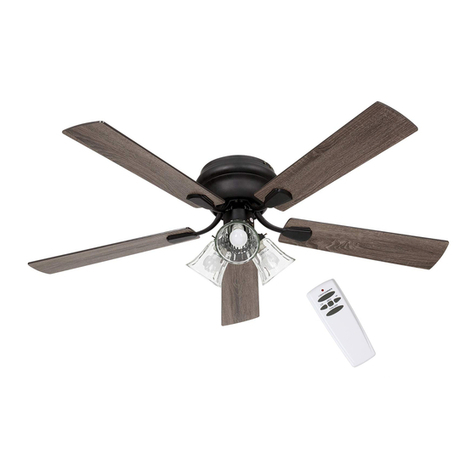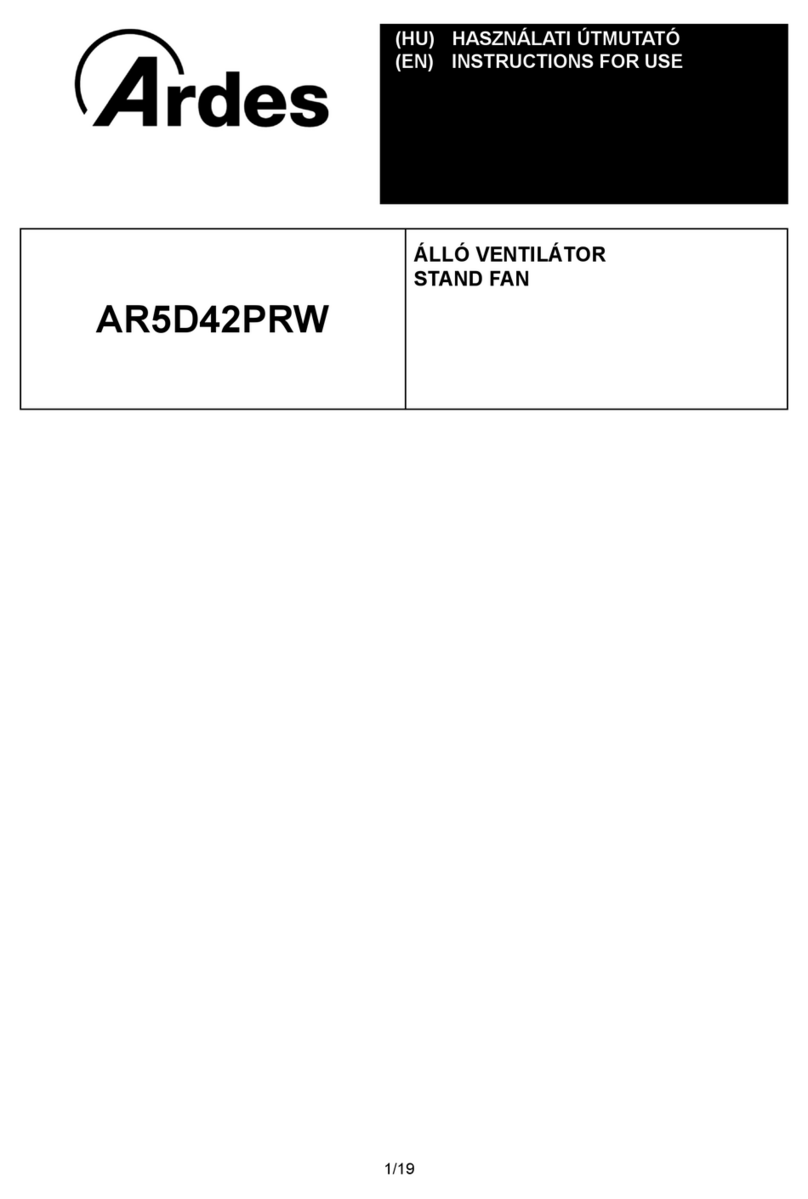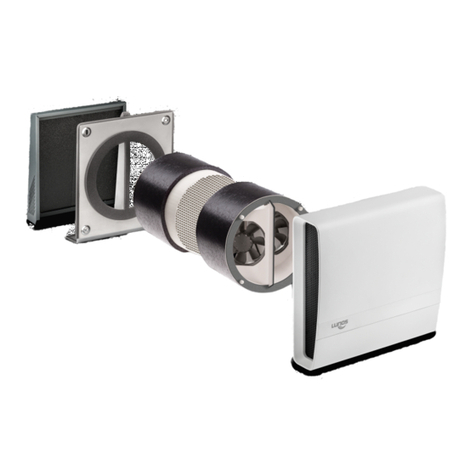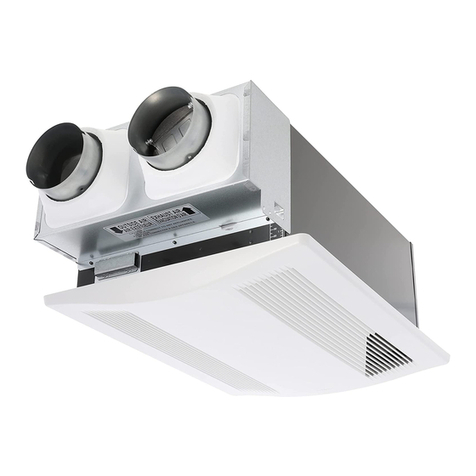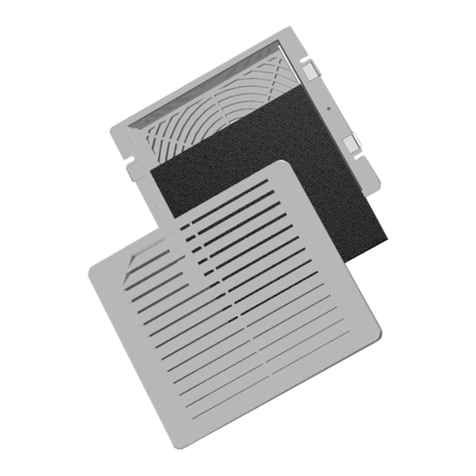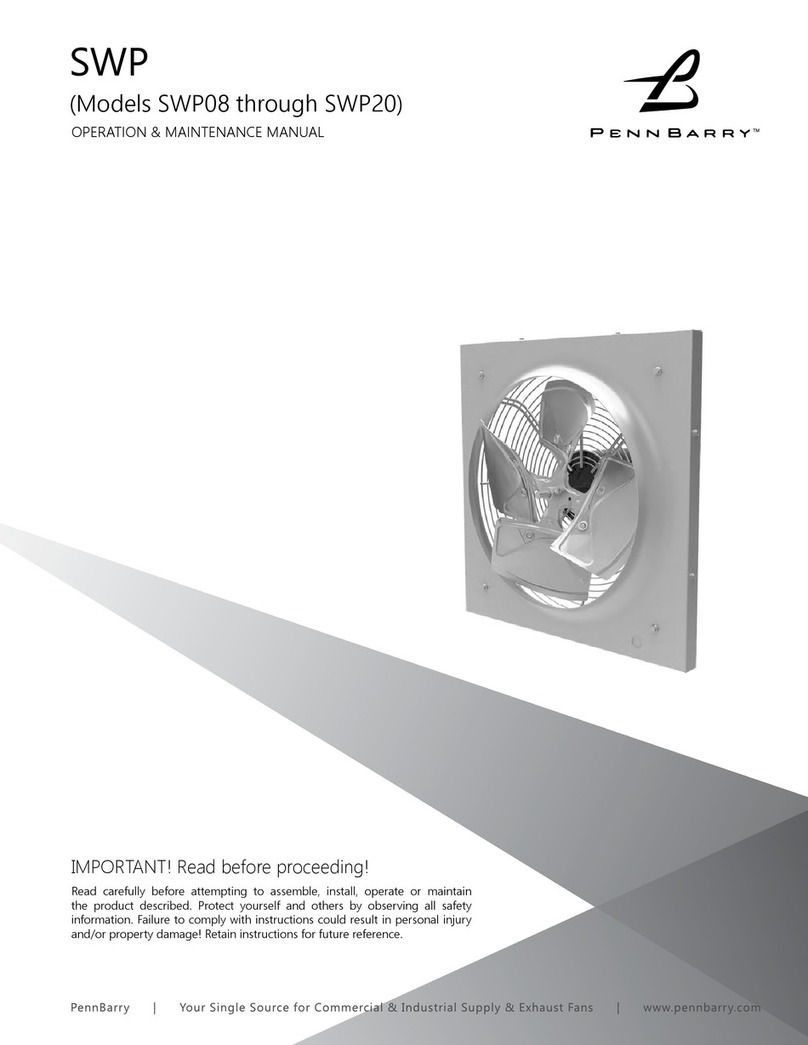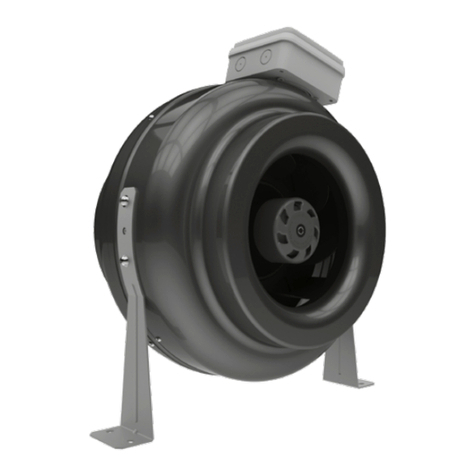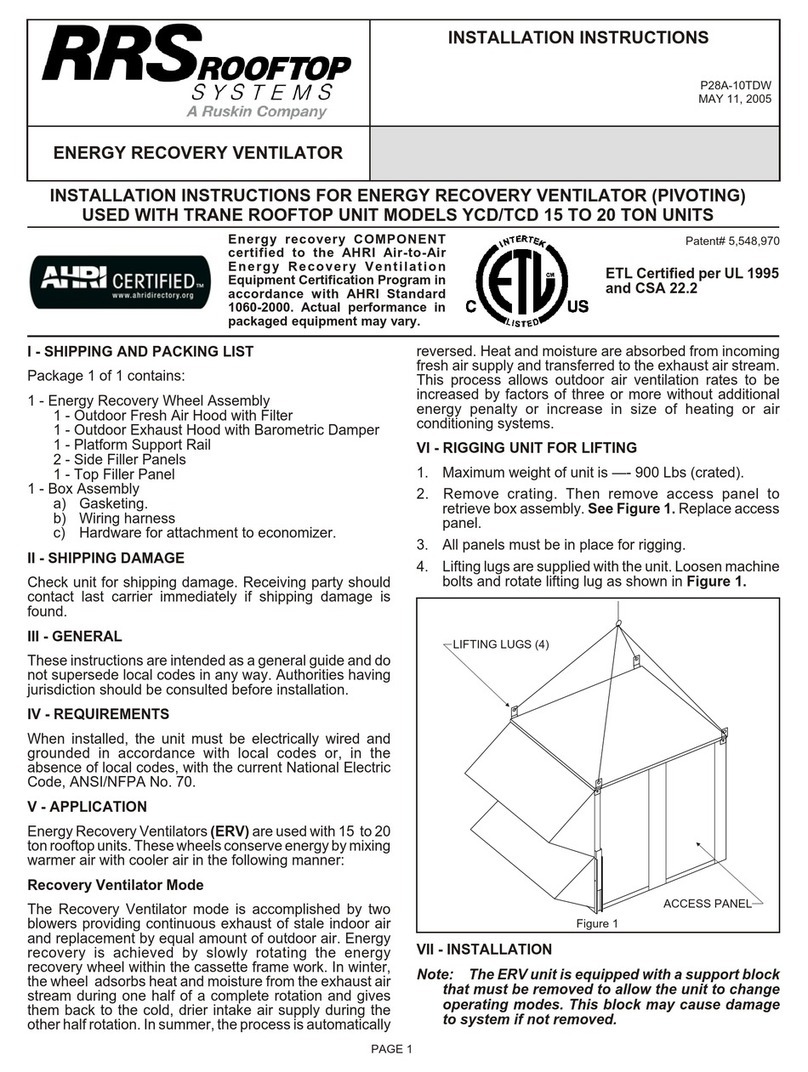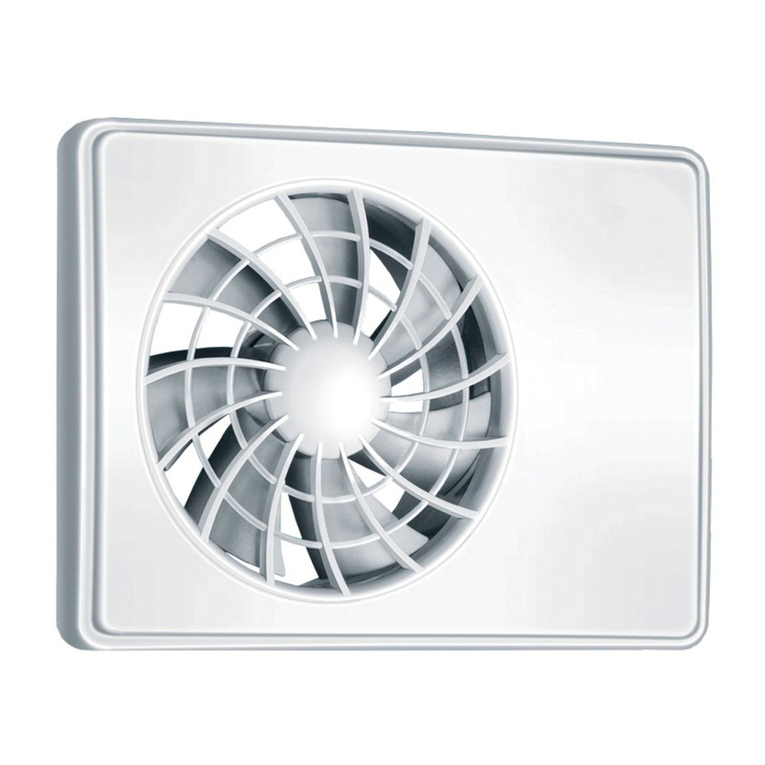Soltronics LTG-CF5002 User manual

READ AND SAVE THESE INSTRUCTIONS
CEILING FANS
INSTALLATION INSTRUCTION
MODEL SERIES
LTG-CF5002

Before beginning installation of your new ceiling fan, read and follow these safety precautions. If
you are not familiar with national and local electrical codes and basic electrical wiring procedures,
we recommend that you have a qualified electrician install your new ceiling fan.
Before you begin, TURN OFF THE ELECTRICITY. Determine which circuit your new fan
will be using and remove the fuse or turn off the circuit breaker at the main electrical
panel.
Make sure that all wiring conforms to national and local electrical codes. If you are in
question, obtain a copy of the codes and wire the fan accordingly. Never leave bare
wires uncovered (wire connection), use wire nuts to cap all connections. Plastic electri-
cal tape is not recommended.
When working with electricity, never take short cuts. Follow the code in every respect.
Basic requirements for a ceiling fan installed with lights are, 120 volts AC - 60Hz, on a
grounded circuit with a 15 amp breaker or fuse. Make sure that your electrical system
and choice of location meet these requirements.
If the location where you plan to install your fan does not already have an electrical
outlet, hire a licensed electrician to run the wiring and install an outlet box designed
for ceiling fans or heavy fixtures. The outlet box should be able to support a mini-
mum moving weight of 50 pounds and marked “Acceptable for Fan Support” (Plastic
outlet boxes are not recommended for ceiling fan installation).
If you plan to use an existing electrical location, check to make sure that the outlet box
is not PLASTIC, that it is securely attached and able to support at least 50 pounds of
moving weight and marked “Acceptable for Fan Support”. If you have any questions,
outlet boxes and support systems for ceiling fans are available at most hardware and
do-it-yourself centers. In most cases, your dealer will have all the necessary products
for the proper and safe installation of your ceiling fan.
The location you choose should have a minimum clearance of 20 inches from any wall
to the blade tip at any point in its rotation and a minimum of 7 feet from blade level to
floor and 10 inches from the blades.
1
SAFETY PRECAUTIONS

2
This ceiling fan was not designed for installation in any location where it might be exposed to
moisture or high humidity. Installation in this type of location could be UNSAFE, will most
likely damage the fan and its finish... and will VOID YOUR WARRANTY.
Every effort has been made to provide you with proper instructions for the safe installation of
this ceiling fan. You could however, encounter situations or problems not covered in this
manual. Should this occur, please refer to a do-it-yourself wiring handbook or hire a qualified
electrician to install your fan.
Never attach the blades to your ceiling fan before the fan body is properly mounted on the
ceiling.
Lubrication of your new ceiling fan is not necessary. The ball bearings have been adequately
charged with grease and permanently sealed at the factory so that, under normal conditions,
further attention is not necessary.
To reduce the risk of fire, electrical shock, or personal injury, mount this fan to
an outlet box marked “Acceptable for Fan Support” and use the Mounting
Screws provided with the outlet box. CAUTION: Install the primary mounting
means and use only the hardware provided with the fan.
To reduce the risk of personal injury take care not to bend the blade carriers.
Be careful not to insert foreign objects into rotating fan blades.
The important safeguards and instructions appearing in this manual are not
meant to cover all possible conditions and situations that may occur. It must be
understood that common sense, caution and careful attention to detail are
factors which cannot be built into this product. These factors must be supplied
by the person or persons installing, caring for, and operating the unit.
Look at Me!
I have safety Tips and
Ideas for installation
These instructions are designed for a number of similar but different ceiling fans. As you
proceed, some steps may or may not apply to the fan you purchased. Compare each
step or optional procedure to your fan and proceed accordingly.
WARNING
WARNING
WARNING

Unpack and inspect fan carefully to be
certain all contents are included. Turn
off power at fuse box to avoid possible
electrical shock.
3
Use metal outlet box suitable for fan
support (must support 35 lbs). Before
attaching fan to outlet box, ensure the
outlet box is securely fastened by at
least two points to a structural ceiling
member (a loose box will cause the fan
to wobble).
PREPARING FOR INSTALLATION
Phillips
Screwdriver
+Flat Blade
Screwdriver
-
Step
Ladder
Wire
Stripper
1.
2.
TOOLS NEEDED3.

Install the mounting bracket onto the
electrical junction box in the ceiling
using two machine screws, two wash-
ers and two lock washers.
4
The mounting bracket has slotted
holes to enable it to move sideways
for proper alignment. Make sure the
mounting bracket is centered over the
electrical junction box and that it is
securely attached. Pull the electrical
wires in the junction box down and
through the mounting bracket. Loosen
the two canopy mounting screws on
the downside face of the mounting
bracket. Back them out about half
way. This will allow for easier installa-
tion of the ceiling canopy later.
Note: Angle mount best suited for
angled or vaulted ceilings. A longer
downrod is sometimes necessary to
ensure proper blade clearance.
Ensure the ceiling angle is not
steeper than 16 degrees. Hanger
opening must be facing up-side.
INSTALL MOUNTING BRACKET
1.
2.
3.
Slotted
Junction Box
Ceiling Canopy Mounting Screw
NO MOVEMENT SHOULD OCCUR BETWEEN
THE MOUNTING BRACKET AND THE
ELECTRICAL JUNCTION BOX.

Remove clamp pin (1) and cross pin
(2) from downrod (3).
5
Loosen set screws in downrod coupling. Insert down rod through the canopy
and coupling cover (4) as shown above. Insert motor wires through the down
rod and insert the down rod into the down rod coupling. Make sure to align the
hole in the downrod with the hole in the downrod coupling. Install cross pin (1)
removed in step 6 through coupling and downrod. Insert keeper pin (2) into
cross pin until it snaps into place. Tighten set screws (3) in coupling. Slide
coupling cover (4) and canopy onto the downrod above the coupling cover.
DOWNROD PREPARATION
1.
2.
3.
12
3
1
4
3
2

Notice the half ball on the end of
the support rod is grooved down
one side. This Keyway fits over the
small keyway pin on the inside of
the mounting bracket and keeps
the ceiling fan from spinning on the
mounting bracket.
6
Using your step ladder, lift the fan
and place the half ball in the center
of the mounting bracket with the
keyway pin inserted into the
keyway on the ball. Turn the fan
left and right slightly to make sure
it is seated on the bracket with the
keyway pin in the keyway.
HANGING THE FAN BODY
1.
2.
Trim the lead wires, leaving
about six inches of each wire
extending from the support
rod.
3.
Mounting Bracket
Keyway Pin
Ball Hanger
Support Rod
Mounting
Bracket
Keyway Pin
Ball Hanger
Support Rod
Ground Wire
Support Rod
Ball Hanger

Use wire connnectors to connect
household supply and receiver wires
according to the diagram and the
following steps:
• Connect the green wire from the
downrod and mounting bracket to
the Bare/Green (ground) supply
wire.
• Connect the Blue wire with the
white label to the blue fan wire.
• Connect the Black wire with the
white label to the black fan wire.
• Connect the White wire with the
white label to the white fan wire.
• Connect the Red wire with the red
label to the Black (live) supply wire.
• Connect the White wire with the
red label to the White (neutral)
supply wire.
7
WIRE CONNECTION
1.
Black (hot/power)
White (neutral)
Bare/Green
(ground)
Red
White
White
White
Black
Blue
Blue
Black
Green
Green
Receiver
WARNING: Do not wire the fan
motor to a variable-speed (dimmer)
wall control.
Lift the ceiling canopy up into place
covering the mounting bracket.
Push the cannopy up so the screws
come through the mounting holes in
in the cannopy. Rotate the canopy
slightly and tighten the screws.
2.
Please refer to page 11~12 for remote controller
and receiver installation and operation detail.
Mounting Bracket
Canopy
Canopy Screw

Attach blade brackets to blades using
the blade bracket screws (1), metal
washers (2), and fabric washers (3), if
provided. NOTE: Some models do not
utilize fabric washers (3).
8
Check the motor for plastic shipping
stabilizer tabs (1), and remove them if
they are present. Attach blade assem-
bly to motor using the noise-dampening
motor gaskets (2) and motor screws
provided. Tighten screws ecurely.
NOTE: Some models do not utilize
motor gaskets, washers, or stabilizer
tabs.
1
22
BLADE INSTALLATION
1.
2.
Always ensure that fan is set to "OFF"
and blades are still prior to changing
direction of blades. Reverse switch on
fan should ideally be set on"FOR-
WARD"(left position) during warmer
seasons to move blades in an anticiock-
wise direction & "RVERSE"(right posi-
tion) during our coaler seasons to make
the fan rotate in a clockwise direction.
3.

9
LIGHT FIXTURE INSTALLATION
3.
1. Connect the plugs from the upper and lower switch
housings.Then install three of the switch housing screws.
2.

10
LIGHT FIXTURE INSTALLATION
4.
5.

11
Use wire connecting nuts supplied with the fan
(FIG.3)
FROM POWER SOURCE
AC 110~120 VOLT 60Hz
3.5AMPS.
CONNECT TO
Green fan wire ....Bare supply wire
Red receiver wire(AC IN L) ....Red or Black supply wire
White receiver wire(AC IN N) ....White supply wire
White receiver wire(TO MOTOR N) ....White fan wire
Black receiver wire(TO MOTOR L) ....Black fan wire
Blue receiver wire(FOR LIGHT) ....Blue light wire
CAUTION: Ceiling Angle Shall Not Exceed 30 Degrees,
For Mounting Controller, Model R28
ACNACL
ANT
COMFAN LIGHT
TRANSMITTER
CODE
SWITCHES
(FIG.1) (FIG.2)
SWITCHES
CODE
ON
1 2 3 4
ON
234
1
ON
ON
234
1
ON
INPUT
OUTPUT
RECEIVER
WHITE
LCA
ACN
INPUT
OUTPUT
RED
FAN
LIGHT
BLUE
ANT
CANOPY
BLUE
COM
BLACK
WHITE
WHITE
BLACK
Use wire connecting nuts
supplied with the remote
controller.
WIRE NUT
RECEIVER
RECEIVER
CANOPY
(FIG.4)
ANTENNA PUT AT OUTSIDE
OF CANOPY BOX CAN GET
MORE OPERATION
DISTANCE
1. SETTING THE CODES
This unit has 16 different code combinations. To set the codes, perform the following steps:
Setting the codes on the transmitter:
A
a. Remove battery cover. Press firmly on the arrow and slide battery cover off.
b. Slide code switches to your choice of up or down position. Factory setting is all up. Do not use this position. Use a small screwdriver or ball
point pen to slide firmly up or down (Figure 1).
Setting the codes on the receiver:
B
a. Slide code switches to the same position as set on your transmitter (Figure 2)
b. Replace battery cover on the transmitter.
2. INSTALLING RECEIVER IN CEILING FAN
Safety precautions:
A
WARNING: HIGH VOLTAGE! Disconnect power by
removing fuse or switching off circuit breaker.
Do not use with solid state fans.
Electrical wire must meet all local and national
electrical code requirements.
Supply for fan must be 110/120 volt, 60Hz. Maximum
fan motor amps: 1.0, Maximum light watts: 240
incandescent or LED.
Otherwise power can cause serious injury or death.
Installing receiver in fan:
B
a. Remove power from the circuit.
b. Remove ceiling fan canopy from the mounting bracket.
c. Disconnect existing wiring between ceiling fan and
Supply in electrical junction box.
d. Make connections as follows, using the wire nuts supplied:
If other fans or supply wires are different color, have this unit installed by qualified licensed electrician.
e. Push all connected wires up into junction box.
f. Lay the brown antenna wire on top of the receiver, and put the receiver into the mounting bracket.
g. Reinstall the canopy on the mounting bracket.
h. Restore power.
REMOTE INTALLATION

12
1.OPERATING TRANSMITTER:
A. Install 9 volt battery(not included). (To prevent damage to transmitter, remove the battery if not used for a long time).
B. Store the transmitter away from excessive heat or humidity.
C. This remote control unit is equipped with 16 code combinations. In order to prevent possible interference from or to
other remote units such as garage door openers, car alarm or security system. If you find that your fan and light kit go
on and off without using your remote control, simply change the code combination in your transmitter and receiver.
D. Operating the buttons on the panel of the transmitter.
HI key -for fan high speed.
MED key-for fan medium speed.
LOW key-for fan low speed.
OFF key-for fan off.
YOUR REMOTE NOW HAS FULL CONTROL OF THE FAN AND LIGHT.
FAN OFF
LO HI
MED
LIGHT/DIMMER
OPERATION DISTANCE 20 FEET
TRANSMITTER
MODEL:
HK-01
Optional Wall Mounting for Transmitter Holder
Place in accessible area of your home, and screw the
transmitter holder into wall using the two screws
provided, slide hand unit into holder.
2. TROUBLE SHOOTING GUIDE
NOTICE !
ON
1 2 3 4
BATTERY
9 VOLT
WARNING
a.Make sure power is correctly connected to the receiver.
b.Make sure the fan pull chain (if included) at highest position.
c.Make sure the light kit switch turned on.
d.Make sure good battery in ransmitter.
e.Make sure the code set at exact same positions in both transmitter and receiver.
f.Make sure the transmitter operates with in 20 feet away from the ceiling fan.
The light function is controlled by pressing the LIGHT/DIMMER key down to increase or decrease light.
Tap key quickly to turn light off or on.
Keep pressing the button in excess of 0.7 second and it becomes a dimmer, the light varies cyclically in 0.8 second.
The receiver can remember the last status of the light brightness when the light was switched, so that it can
resume to adjust the light brightness.
LIGHT/DIMMER key-for light brightness and off.
Your ceiling fan and light kit assembly must meet the following requirements:
1. Do not use with solid state fans.
2. Electrical rating: 120v 60Hz 3.5A
MAX. Motor amps: 1.0
MAX. Light watts: 240-(incandescent or LED)
TO REDUCE THE RISK OF SHOCK, THIS FAN MUST BE INSTALLED WITH A WALL CONTROL/SWITCH.
NOTE: THE MANUFACTURER IS NOT RESPONSIBLE FOR ANY RADIO OR TV INTERFERENCE CAUSED
BY UNAUTHORIZED MODIFICATIONS TO THIS EQUIPMENT. SUCH MODIFICATIONS COULD VOID THE
USER'S AUTHORITY TO OPERATE THE EQUIPMENT.
REMOTE OPERATION

13
PARTS INVENTORY
______
______
______
______
______
______
______
______
______
______
______
______
______
______
Hanging Bracket
Canopy
4 in & 6 in Downrods
Yoke Cover
Cross Pin
Motor Assembly
Blade x5
Blade Arms x5
Light Kit x2
Led Bulb x2
Glass Shade
Receiver of Remote Control
Gaskets
Nuts
Decorative Cover
Decorative Nut

Check circuit fuses or breakers.
Check all electrical connections to insure proper
contact.CAUTION: Make sure the main power if OFF when checking any
electrical connection.
14
1. Fan will not start:
Make sure all motor housing screws are sung.
Make sure the screws that attach the fan blade brackets to the motor are tight.
Make sure wire nut connections are not rubbing against each other or the
interior wall of the switch housing. CAUTION: Make sure main power is off.
Allow a 24-hour "breaking-in" period. Most noise associated with a new fan
disappear during this time.
If using an optional light kit, make sure the screws securing the glassware are
tight. Make sure the light bulbs are not touchingany other component.
2. Fan sounds noisy:
Check that all blade and blade arm screws are secure.
Most fan wobbling problems are caused by blade levels unequal. Check this
level by selecting a point on the ceiling above the tip of one of the blades.
Measure this distance. Rotate the fan until the next blade is positioned for
measurement. Repeat for each blade. This distance deviation should be
equal within 1/8".
Use the enclosed Blade Balancing Kit if the blade wobble is still noticeable.
If the blade wobble is still noticeable, interchanging two adjacent ( side by
side) blades can reditribute the weight and possibly result in smoother
operation.
3. Fan wobble:
PROBLEM SOLUTION
1.
2.
3.
4.
5.
1.
2.
3.
4.
1.
2.
Table of contents
Other Soltronics Fan manuals
Popular Fan manuals by other brands
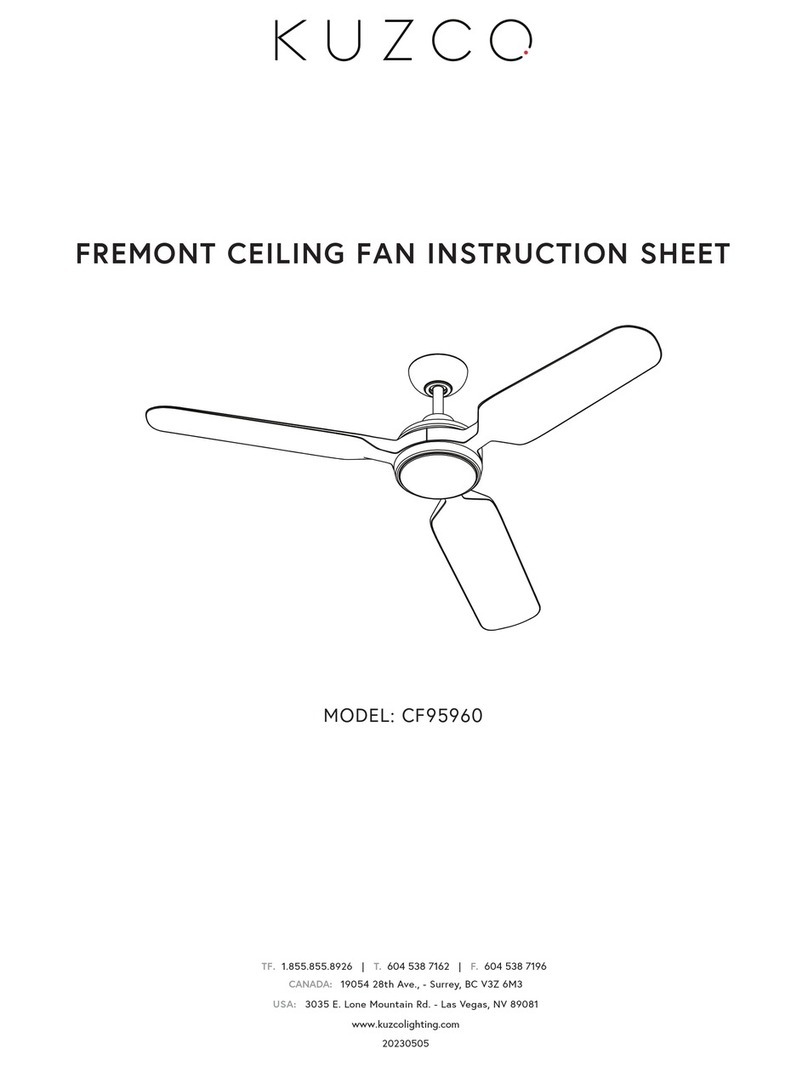
kuzco lighting
kuzco lighting FREMONT instruction sheet
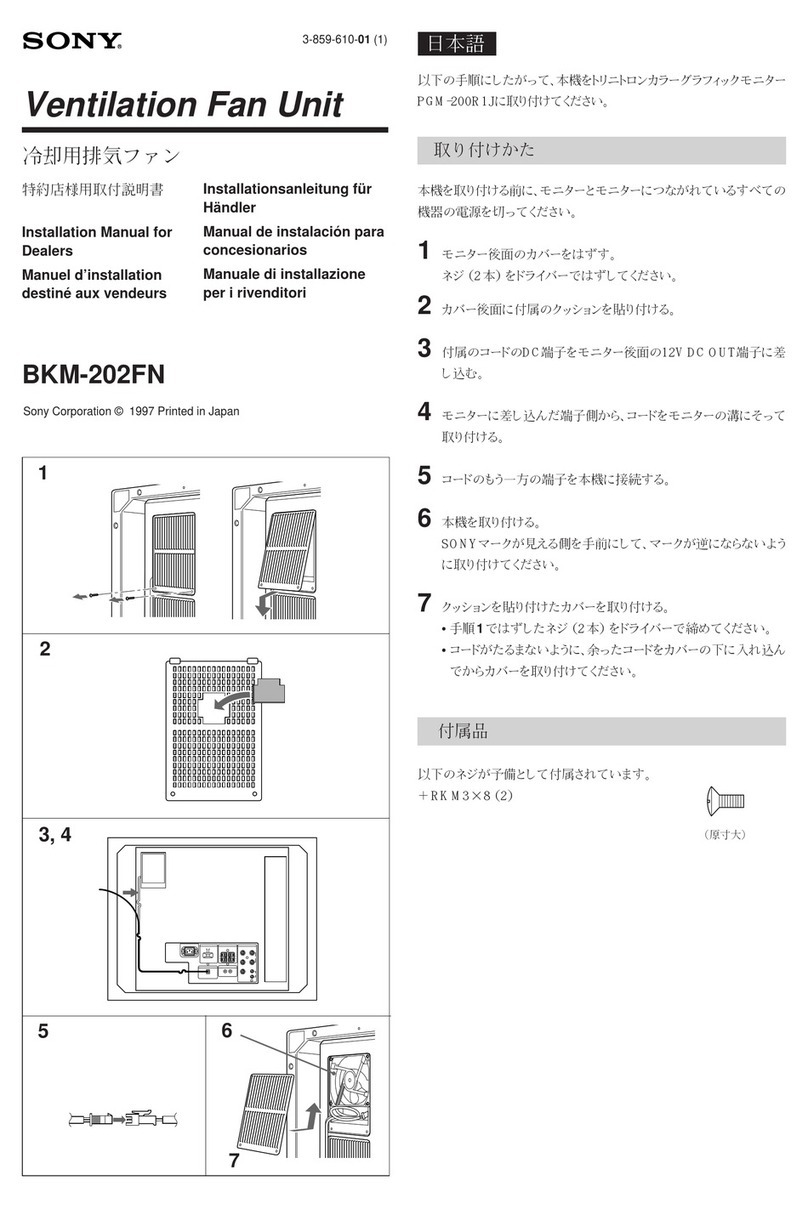
Sony
Sony BKM-202FN Installation manual for Dealers
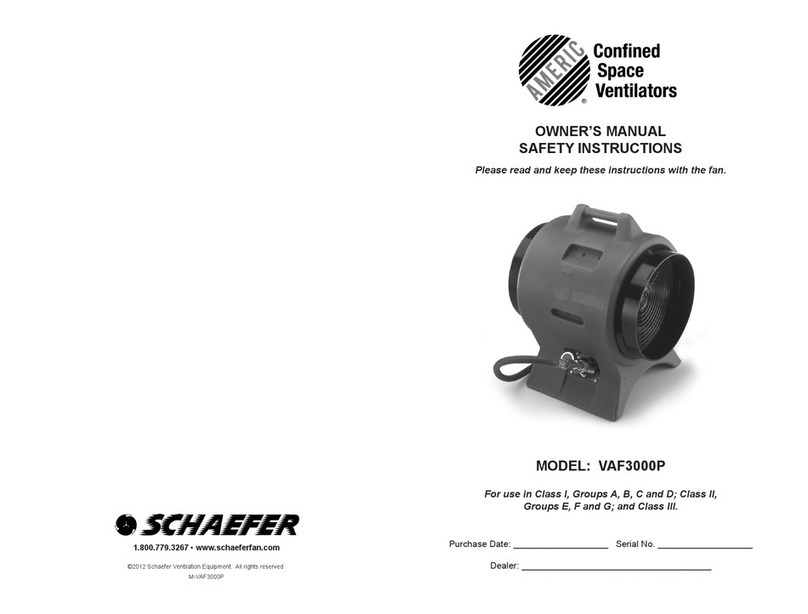
Schaefer
Schaefer VAF3000P owner's manual
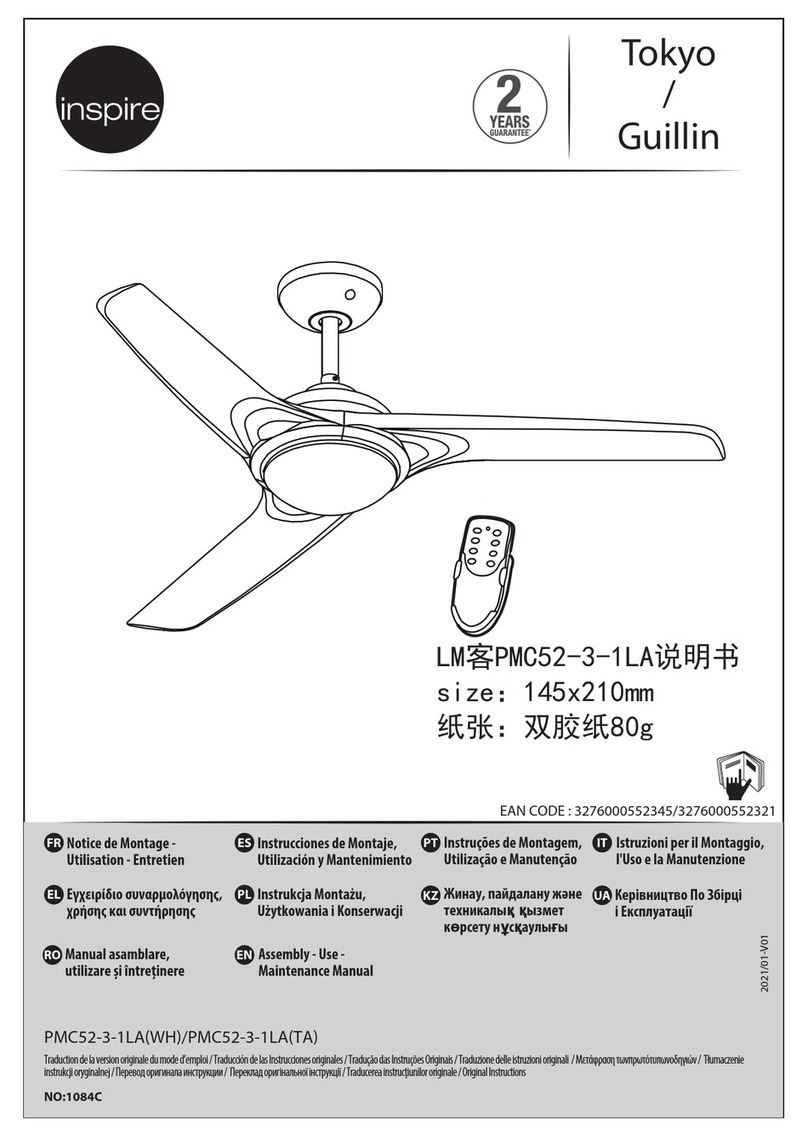
Inspire
Inspire Guillin Assembly, Use, Maintenance Manual

Weinmann
Weinmann MEDUMAT Transport quick start guide
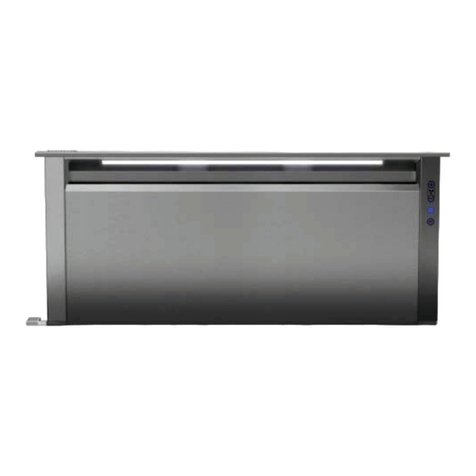
Viking Range
Viking Range CVDD5300 Use & installation guide
